Eastern CoachWhip
Ring-necked Snake
Florida banded watersnake
Eastern Copperhead
Eastern Copperheads, Agkistrodon contortrix, are beautiful snakes that are most often found in wet forested areas. Copperheads are thick-bodied and adults grow to 22-36 inches long. Their alternating light and dark colors provide extraordinary camouflage on the forest floor. Meals consist of lizards, amphibians, insects, birds, small mammals, and other snakes.
In the spring, male Copperheads will travel long distances to find a mate. Females give birth to 7-20 live young in the summer. The little ones, who are born with a color pattern like their parents, wiggle their bright yellow tails to attract lizards and frogs for a tasty meal.
Copperheads are venomous snakes. Like all snakes, they only strike out at humans when they are defending themselves. Watch your step. Because they are masters at camouflage, Copperheads can easily be stepped upon. Luckily, the venom is not very potent and deaths are rare. However, if you are bitten by a Copperhead, be sure to seek medical attention immediately.
Fun Fact: Copperheads are pit vipers. A pit viper senses small temperature changes in its surroundings. This allows it to strike out with accuracy at the perceived danger or prey.
Map: UF IFAS Extension University of Florida
Photo Credit: Dan Kon

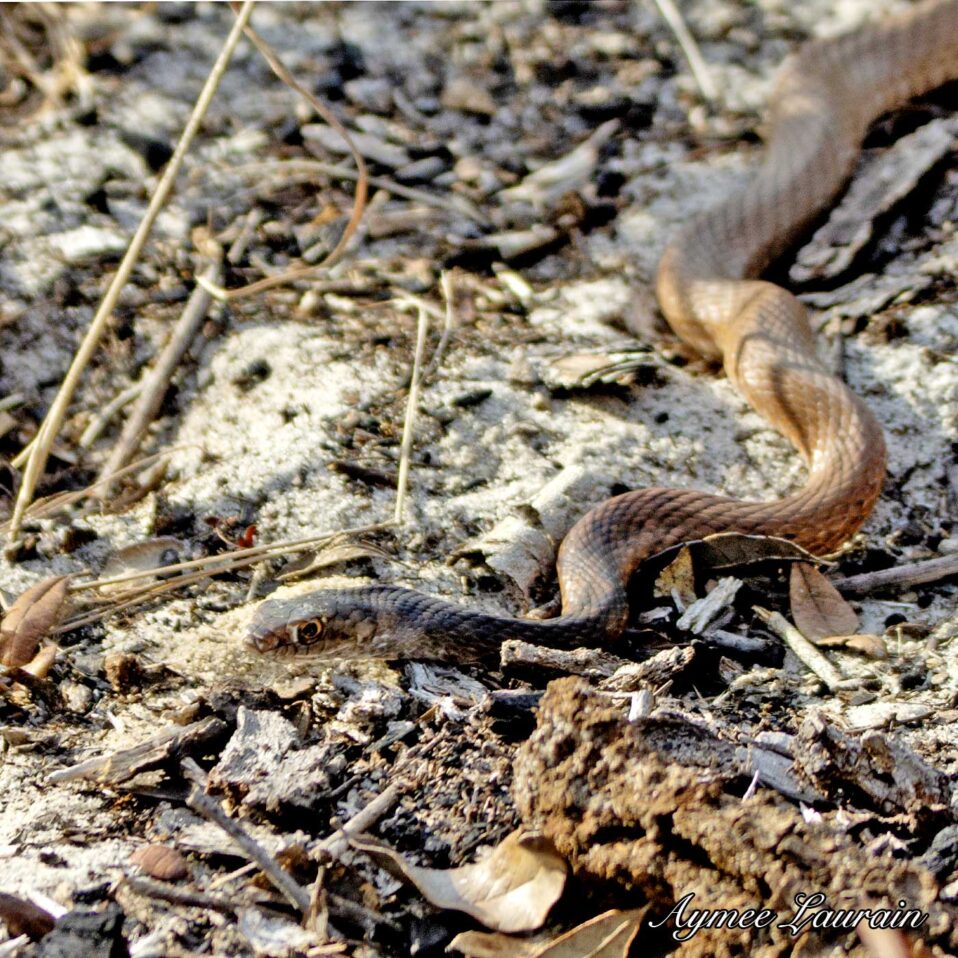
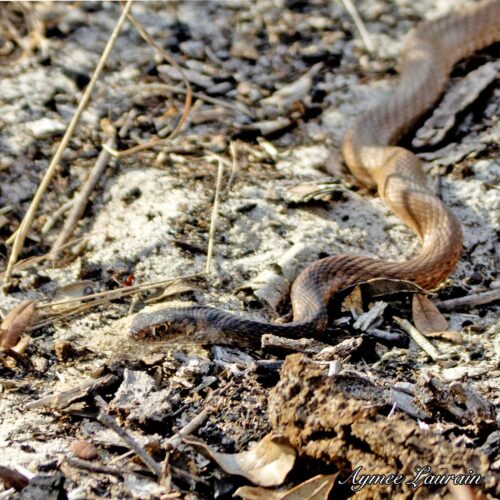
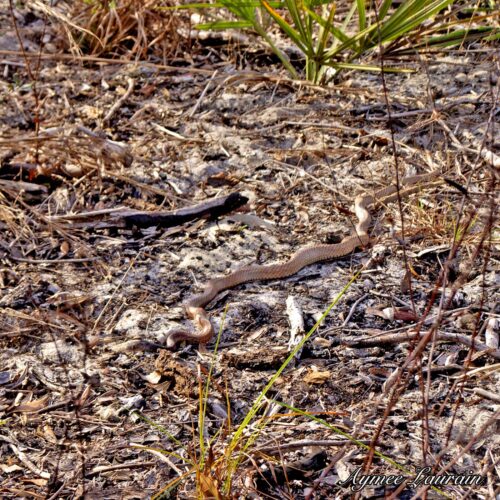
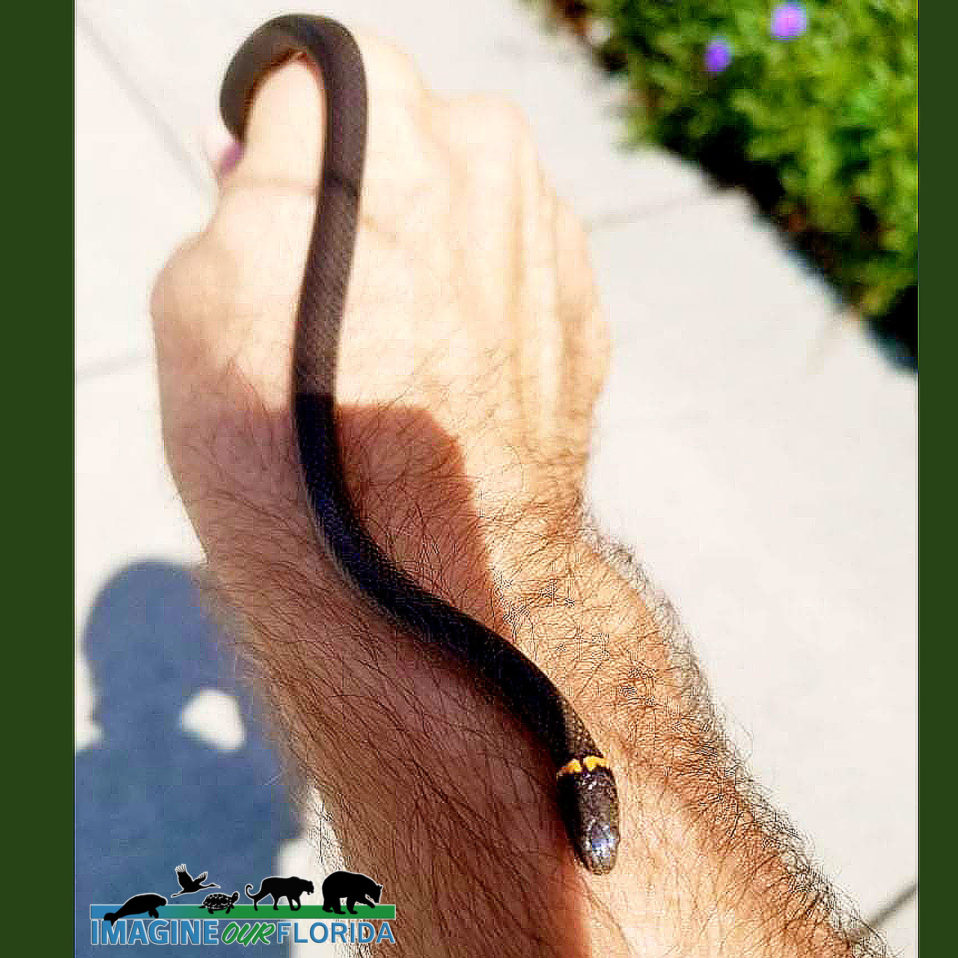
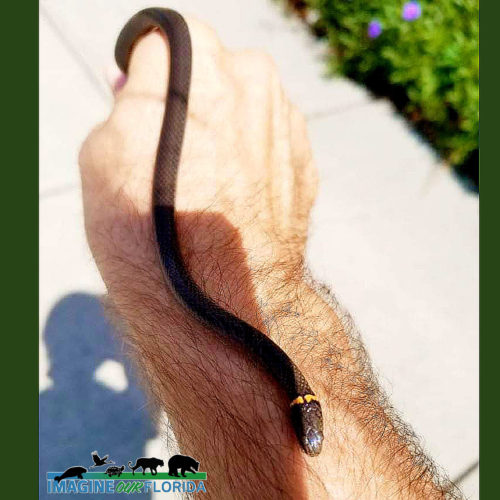
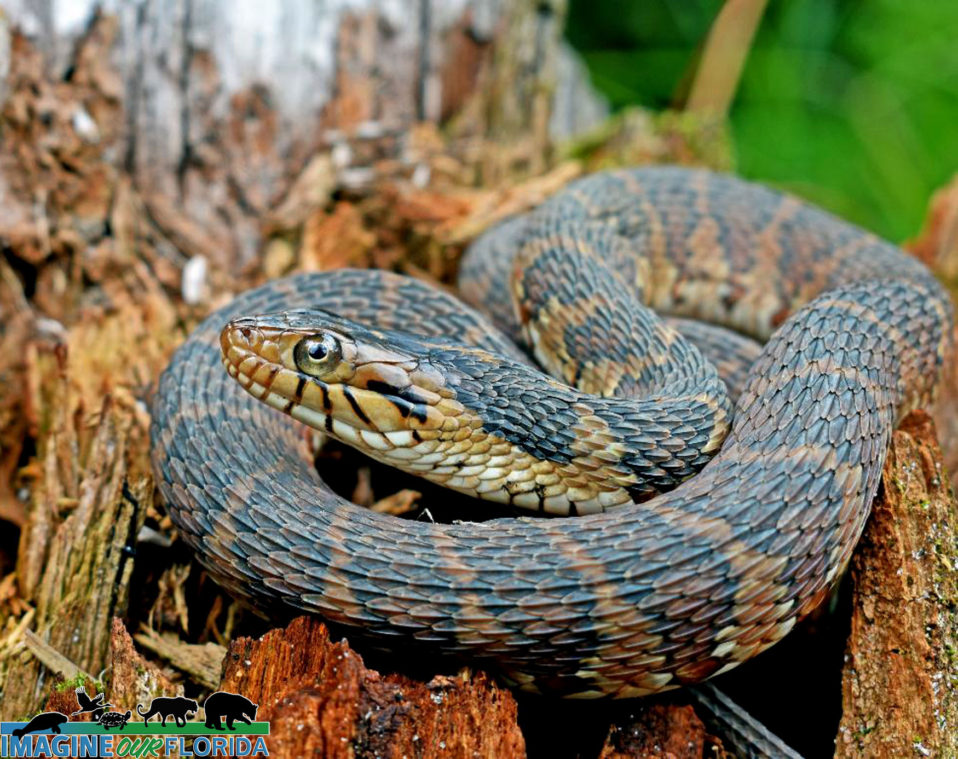
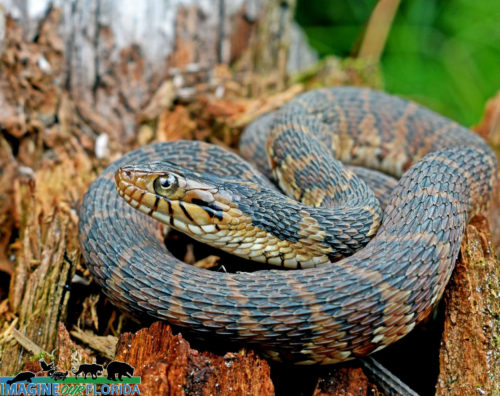
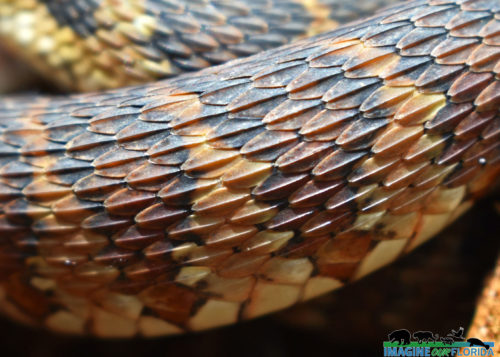
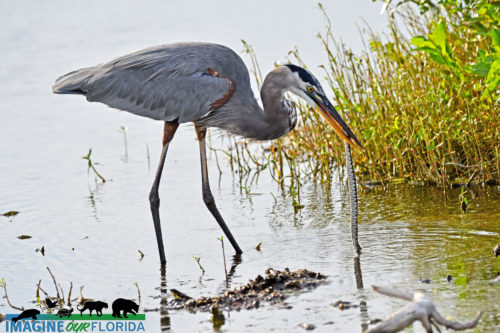
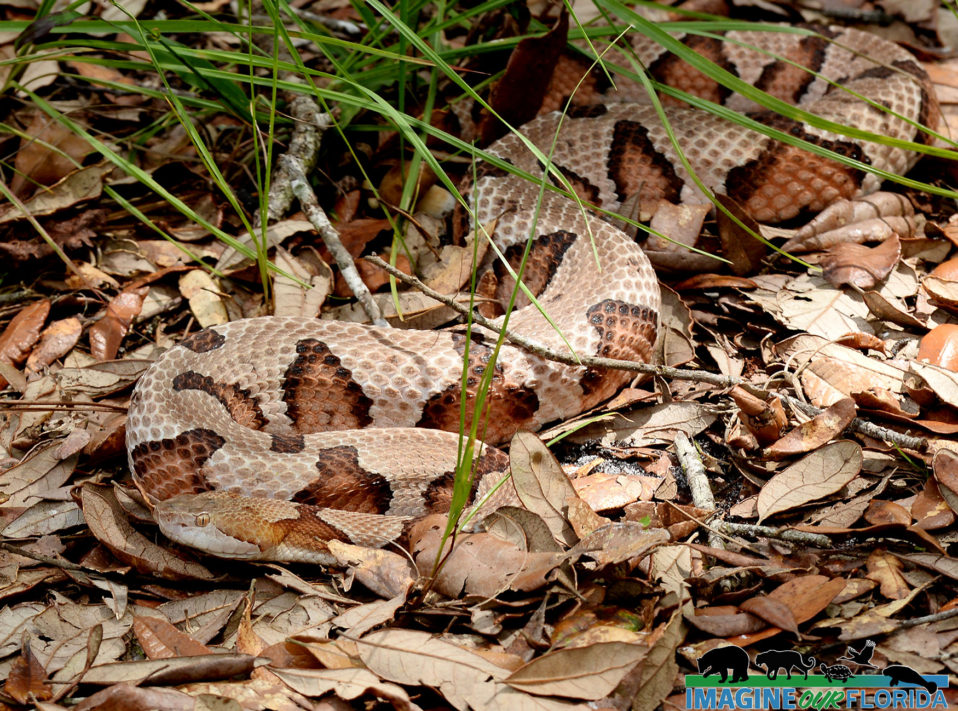
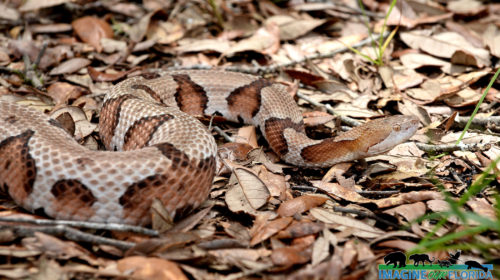
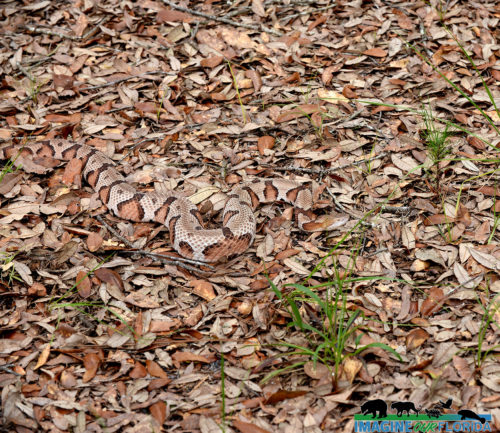
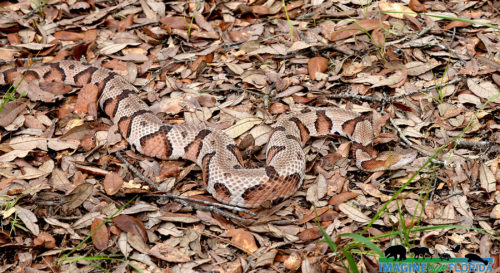
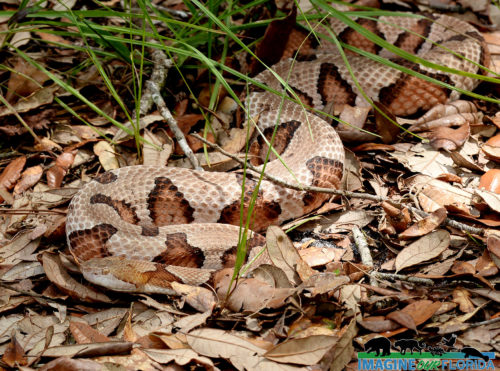
Recent Comments